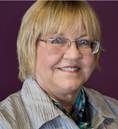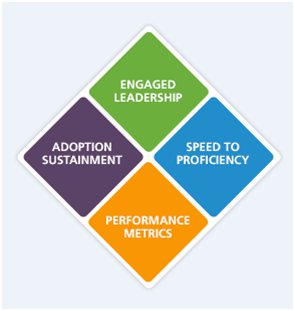The following is a guest blog post by Laura Speek, learning and development specialist at The Breakaway Group, a Xerox company. Check out all of the blog posts in the Breakaway Thinking series.

Healthcare organizations of nearly every variety are heavily involved in analyzing a smorgasbord of choices in electronic health record (EHR) technology. While some care providers still face the challenge of transitioning from paper to digital records, others are already moving to next-generation electronic systems.
Clearly, the cornerstone benefit of EHRs is improved patient care. However, that objective is best achieved when healthcare organizations look beyond software implementation (the installation phase) and orchestrate true technology adoption (overall integration for clinical benefit).
Consider the analogy of a wedding and a marriage. Software implementation is a momentous, finite event, similar to a wedding ceremony, that marks the beginning of a long-term partnership. The ensuing marriage demands that couples work diligently to learn how to live together in a way that is harmonious and meaningful. True technology adoption requires an extended commitment, comparable to a marriage. Over time, the organization coordinates efforts to seamlessly integrate a software system into daily workflows, procedures, and processes. The result is an enduring, measurably beneficial marriage with technology.
The Breakaway Group (TBG) is a company that works in healthcare and has conducted extensive research to identify elements of successful EHR adoption. Studies have shown that certain strategies can significantly contribute to the integration process. Referred to as the “four corners of adoption,” here are our research-based recommendations for successful EHR conversion.
Four Corners of Technology Adoption

Engaged Leadership: Leaders must possess the insight, will, and ability to direct and inspire teams throughout the adoption process. Engaged leadership begins with communication of a common vision and purpose that permeates the organization from the top down. Informed and enthusiastic healthcare leaders set the tone for creating a culture of adoption, which research has proven is vital for successful EHR integration.
Speed to Proficiency: TBG’s research indicates that targeted, streamlined education can significantly reduce training time and associated costs, while rapidly building user proficiency and confidence. The goal of developing proficiency to perform common daily tasks – as opposed to requiring mastery of multitudinous software bells and whistles – can be achieved in very short order. Brief, role- and scenario-based online courses that are relevant, self-paced, and accessible on demand appeal strongly to adult learners. Motivated learners generally complete assigned courses, score well on review tests, and rapidly assimilate new technology into routine workflows.
E-learning is a financially attractive alternative to instructor-led education. However, some healthcare organizations supplement online courses with carefully developed in-person instruction about unique or complex workflows that are not well suited to electronic formats. Our research confirms the effectiveness and efficiency of a “blended” educational approach that combines digital and personal delivery systems.
Performance Metrics: Positive change nearly always emanates from constructive, quantitative examination. In other words, “what is measured will improve.” Studies prove that rigorously tracking and analyzing performance metrics can uncover opportunities for adjustments that substantially bolster technology integration. The key is to establish reliable systems for collecting performance metrics early enough to yield meaningful results and to prescriptively analyze that data on a regular basis.
Adoption Sustainment: True EHR adoption requires a plan for accommodating software updates, new medical discoveries, and changes in workflows – a process referred to as “optimization.” Optimization addresses post-implementation issues involving best practices, workflows, and related educational revisions. This key adoption element requires continuous effort, examination, and the willingness to make mid-course adjustments to fine-tune the relationship between an organization and its technology.
The Breakaway Method™
TBG’s intensive research led to the publication of Beyond Implementation: A Prescription for Lasting EMR Adoption, a book that has inspired many hospitals to re-examine their approach to technology integration. Careful analysis of our research data led to the development of The Breakaway Method™, a comprehensive EHR-adoption solution. To date, our methodology has helped nearly 1,000,000 healthcare staff members rapidly embrace new HIT software. Our method reliably accelerates bona fide adoption while minimizing organizational stress and disruption.
In the course of working with hundreds of medical organizations, using EHR systems from vendors of all varieties, we have acquired valuable insights. TBG has identified some common HIT adoption issues and helped clients envision and implement successful resolution strategies. Over the coming months, we have the opportunity to share our experience, observations, and recommendations concerning adoption challenges successfully met by different types of care providers. Stay tuned.
Laura Speek is a learning and development specialist at The Breakaway Group, a Xerox company. She can be reached at: laura.speek@xerox.com. To learn more about TBG, go to: http://www.thebreakawaygroup.com.
Xerox is a sponsor of the Breakaway Thinking series of blog posts.













